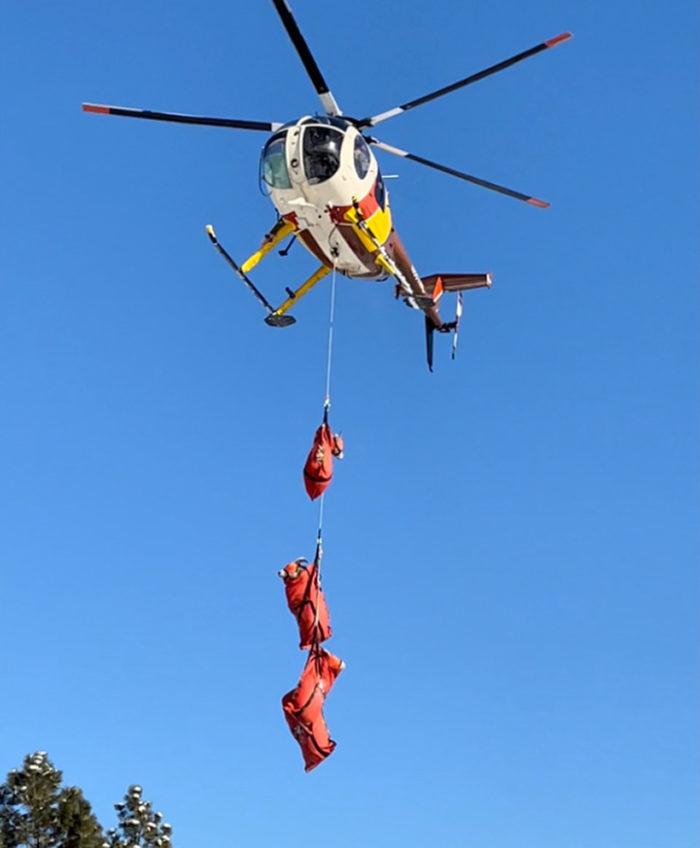Wild Sheep Foundation, Successful Reintroduction in the Tendoys
The Wild Sheep Foundation announced a cause for celebration as a new wild sheep population was reintroduced into Montana’s Tendoy Mountains.
“This was a historic couple of days for wild sheep conservation and an experience I will never forget,” said Keith Balfourd, Director of Marketing and Communications for the Wild Sheep Foundation. “It was such an amazing experience to be a part of and so many people involved that made this possible I’m not sure where to start.”
Twenty-six wild sheep (16 ewes, two lambs, and six rams) were helicopter captured from Wild Horse Island, transported by air to Big Arm State Park for processing, then loaded into two special transport trailers. The sheep were driven overnight to Dell, Montana, where they were released at dawn the next morning into the Tendoy Mountain Range.
In August of 2020, Montana Fish, Wildlife, and Parks (MTFWP) approved two new trap and transplant projects. The first was successfully executed in December when a new population was established in Montana’s Little Belt Mountains from 50 sheep captured in HD482, south of the Missouri Breaks, and safely released in their new home. The Tendoy Mountains was the second reintroduction and represents the initial phase to repopulate the Tendoy’s with healthy bighorns after agency action to depopulate the range of bighorns during 2016 and 2017 due to chronic prevalence of respiratory disease.
“This was more than wild sheep conservation in action; it was like watching a well-oiled machine,” Balfourd explained. “From the helicopter netgun capture crew to the FWP biologists and volunteer ground crew processing the sheep as they came in, everybody had a job to do with Job 1 being the health and safety of each animal. These folks are rock stars.”
This relocation we made possible by a long list of wild sheep enthusiasts and stakeholders. This includes MTFWP, Montana State Parks, the Confederated Salish and Kootenai Tribes, the Montana Chapter of the Wild Sheep Foundation, the Montana Wool Growers Association and individual domestic sheep producers, local landowners, the U.S. Forest Service, local and national sportsmen and women, the Wild Sheep Foundation, and the Bass Pro Shops and Cabela’s Outdoor Fund.
“With this diverse list of collaborators and as the person in 1985 who drove the truck to release the first group of bighorn sheep into the Tendoys, to the very same release site, this effort is an exclamation point in my professional career,” stated Kurt Alt, Conservation Director for Montana and International programs, for the Wild Sheep Foundation.
“The release was another sight to behold,” Balfourd concluded. “Watching these sheep break from the trailers and make tracks for their new mountain home is something I’ll never forget. To know they represent new hope for an area that historically had wild sheep. It was kind of like Noah’s Ark except the cargo was all wild bighorns.”
A second trap and transfer to add more wild sheep to this new Tendoy’s herd is scheduled for this winter 2021-2022.
In over 40 years since its formation, WSF has raised and put on the mountain more than $115 million, resulting in an incredible wildlife recovery success story. Through wild sheep transplants, research, water development, predator management, educational outreach and many other WSF initiatives, the numbers of Rocky Mountain, California and desert bighorn sheep have soared threefold in North America, from around 25,000 in the 1950s to 85,000 today.


